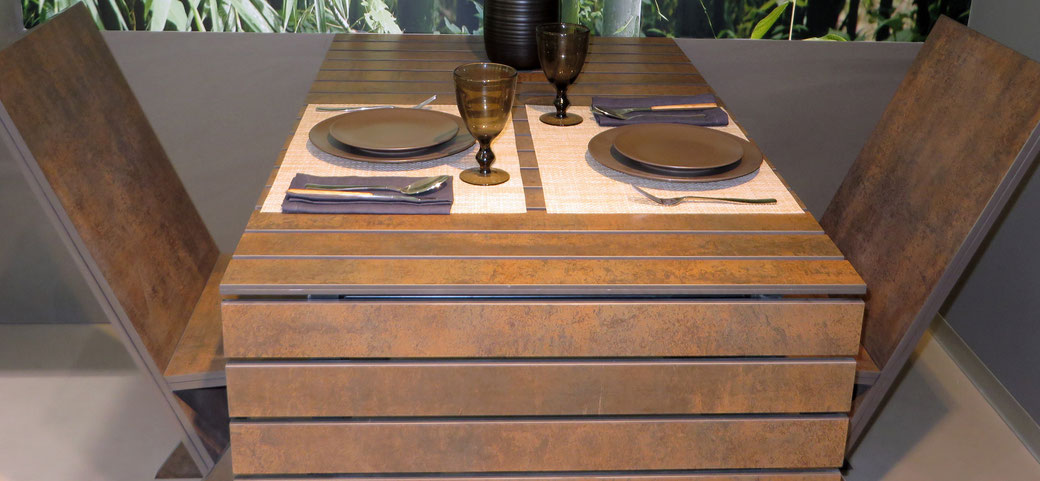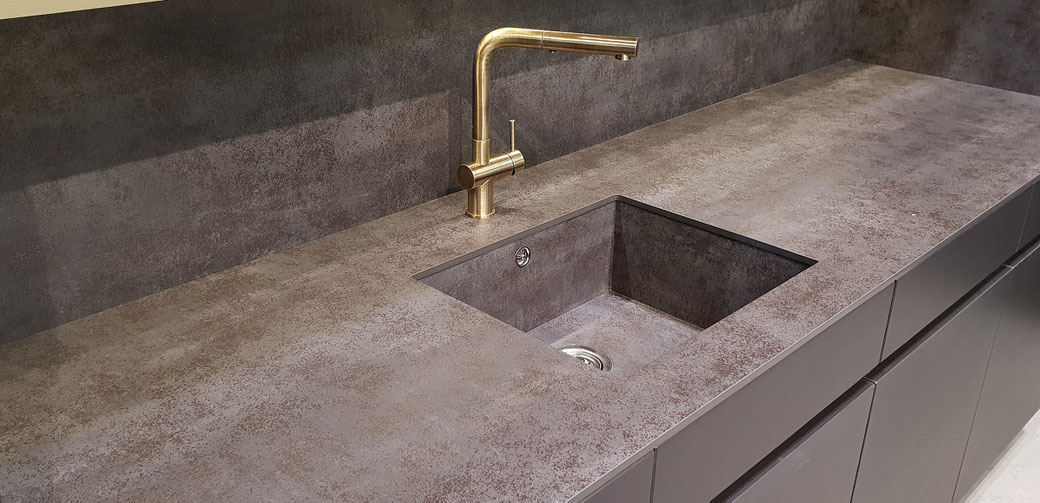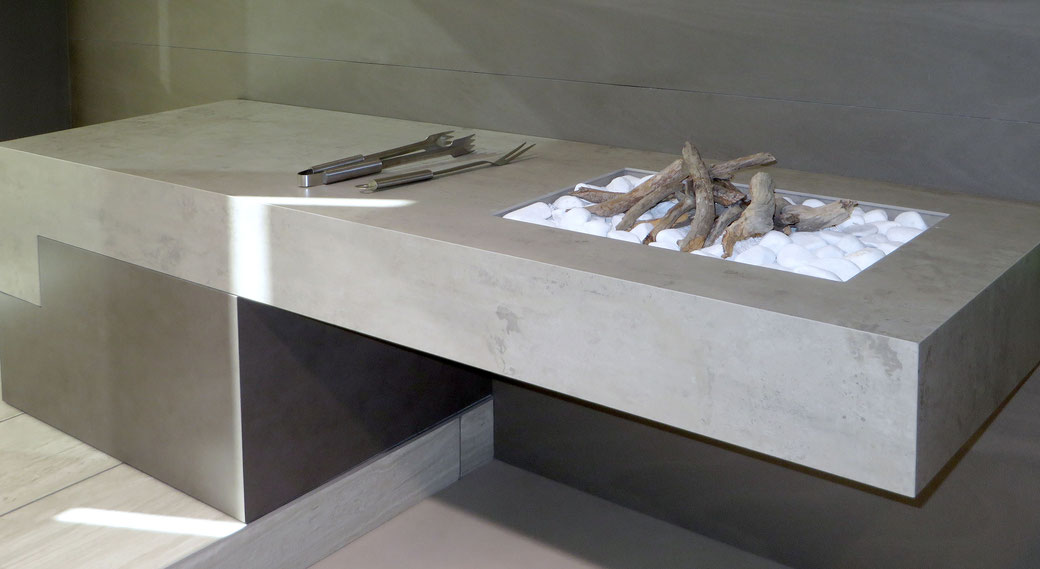Sintered Stone - Harder than Granite and Scratch-resistant
Sintered stone differs from other artificial stone types not only in its composition but also in its qualities and the peculiarities of production. Sintered countertops look very modern and give an impression of lightness and elegance, at the same time surpassing natural stone worktops in strength and durability. According to designers, this 100% natural material is the latest high-tech fad.

How sintered stone is made
Have you ever thought what a sintered stone slab undergoes before it becomes your countertop or stairs? Just imagine the mixture of crushed stone, sand and clay powder pressed by the weight of two Eiffel Towers! Compressed slabs are then baked in a special oven at a temperature of more than 1,200 Celsius degrees. Using such technology, all minerals naturally fuse together, just as it happens naturally deep under the earth's surface, giving the resulting new material exceptional physical and mechanical properties. At the last stage of production, a high-quality print is applied to the top surface of the slab.

variety of patterns
The print is usually visible only on the surface of the sintered slab. The edge and cut colour most often is uniform, just like in ceramic tiles. In other words, the pattern does not have volume like in natural stones. However, some manufacturers have developed slabs with the texture visible across all their thickness. The appearance and the properties of sintered stone slabs manufactured by different producers are different. Some sintered stone brands are more resistant to shocks, others are more fragile. The qualities mainly depend on the rock mixture used in production, slab baking temperature and pressure applied. Some slabs have exceptional patterns and textures. There are no limits to perfection, and improvements are being done constantly in various directions. Generally, the more advanced the slab surface pattern, texture and other qualities, the more expensive it is.

You can hardly burn or scratch it
Sintered stone is extremely hard, resistant to scratching and to extreme heat. To properly reveal its durability, resistance and hardness, the sintered stone product has to be placed on a solid base (after installing furniture, laying floors or making walls). If the base is unstable or flexible, solid surface slabs can crack due to applied pressure or bending. Remember that the standard slab thickness is 12 mm. This material can be even thinner - just 3 mm, 4 mm or 6 mm. Thin panels can be used for furniture facades, fireplace surrounds, decorative walls, as interior and exterior wall cladding. You would hardly succeed in burning a high-quality sintered stone surface, neither would you scratch it with a knife. Some brands are totally resistant to paint, so that graffiti drawings can be easily wiped off. For this reason sintered stone panels are often used for cladding school facades.

are there any downsides?
The downsides of sintered stone apply more for fabricators than for final users. Most slabs of sintered stone require special saws, special tools and special skills to work them. When cutting a sintered stone slab with conventional stone saws, it can crack and crumble due to its hardness and rigidity. Unexpected things can also happen when slabs or final products are transported carelessly, they may crack or break if shaken. This material needs a solid and uniform base to reveal its true hardness and good properties. Sintered stone floor can only be laid on well leveled concrete. This is all the more important when placing heavy furniture on top. Just keep in mind that the sintered stone slab is 3 meter-long!

Famous Sintered stone brands
Neolith, Dekton, Lapitec
